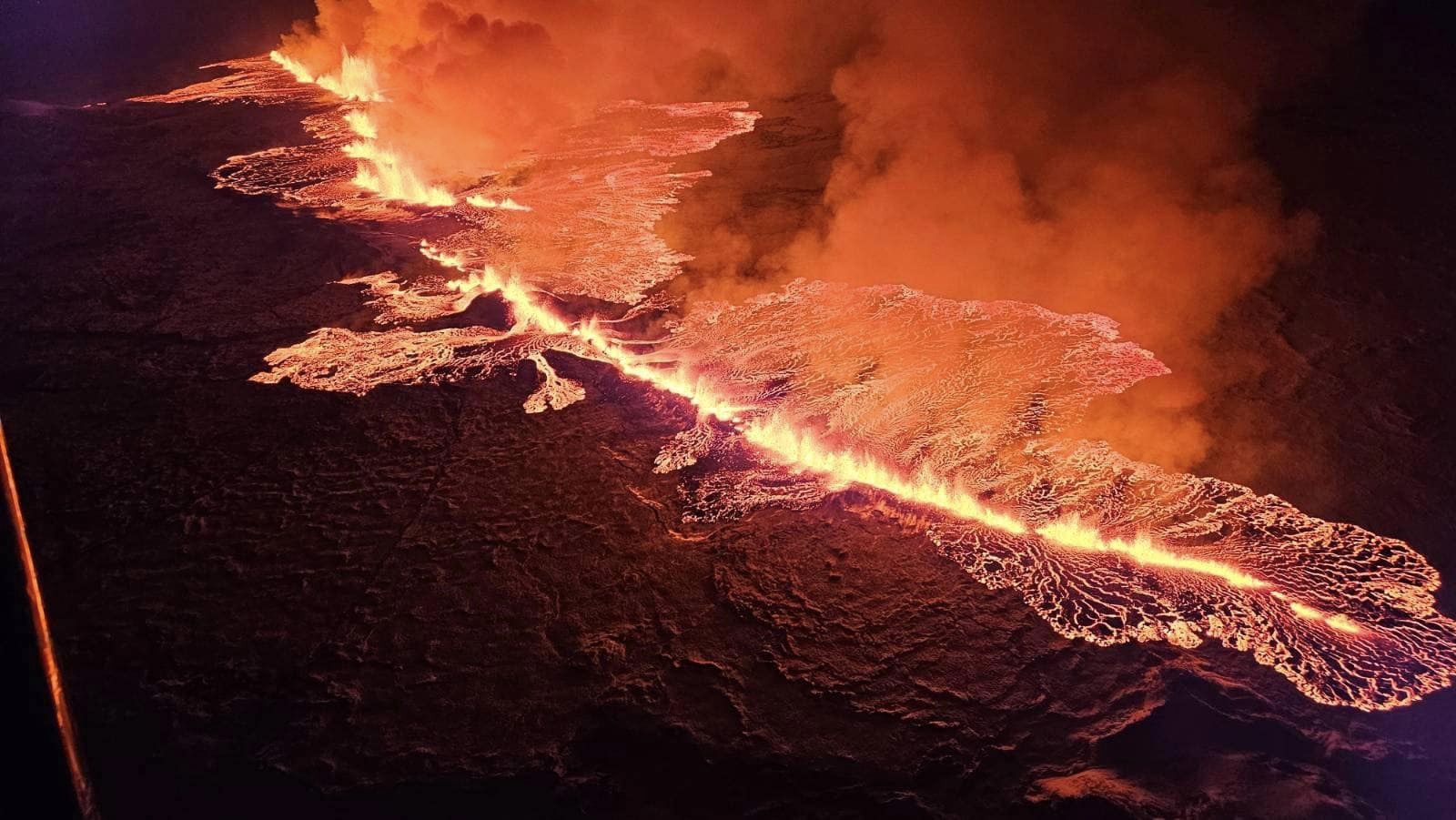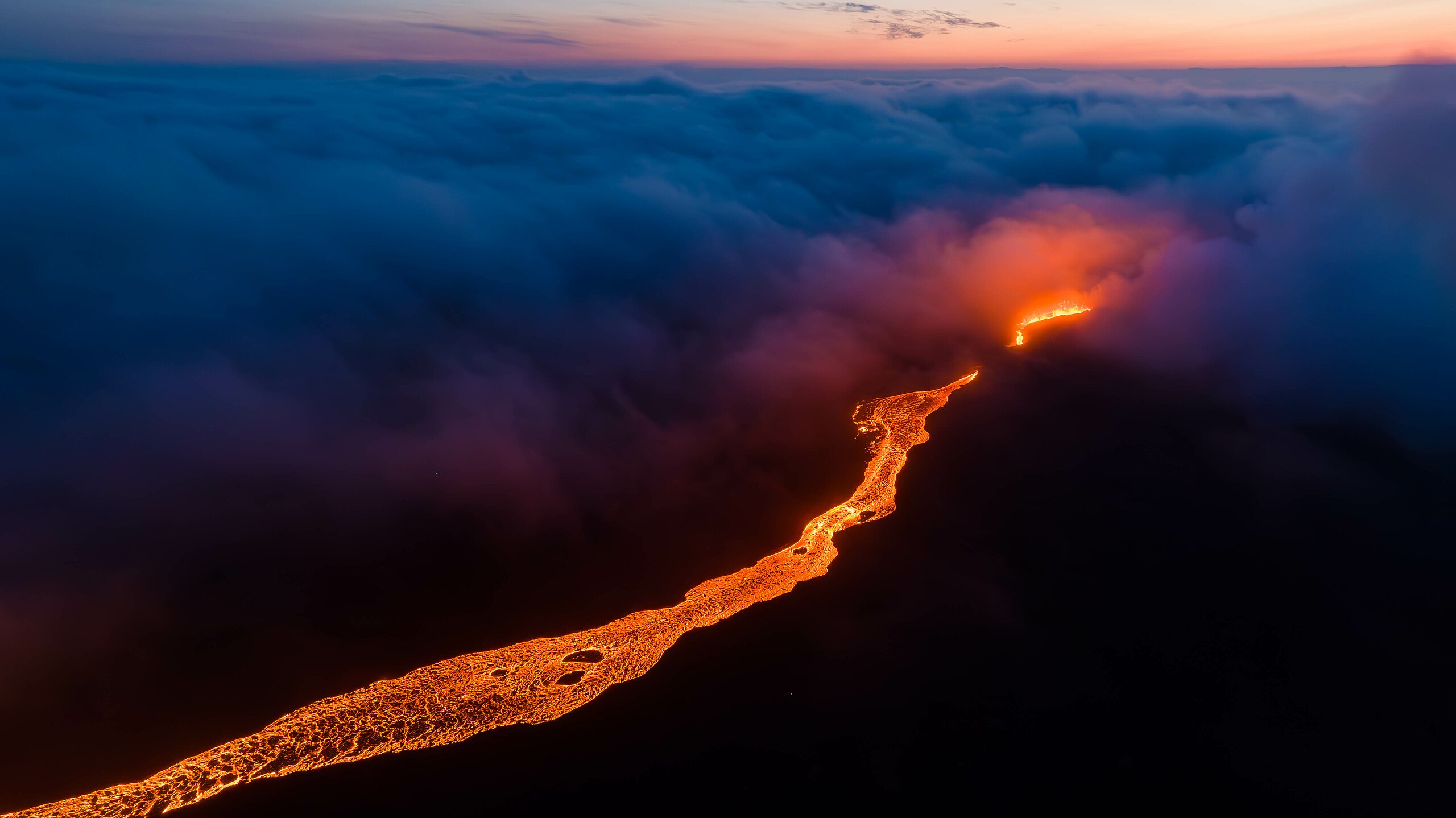Tag: Reykjanes
Alas, Poor Grindavík: Iceland Eruption Commences in a Terrible Location

The Reykajanes volcanic system just gave Iceland an awful early Christmas present: a brand new eruption in nearly the worst possible spot. Alas, we can’t return it.

Aerial view of the eruption taken from a Civil Defense helicopter a few hours after the eruption started. Credit: Almannavarnadeild ríkislögreglustjóra
Iceland Eruption Nearly Inevitable; Grindavík Could Go Under Lava

Up til now, volcanic eruptions on Iceland’s Reykjanes Peninsula were benevolent tourist attractions. They put on pretty shows and confined themselves to remote, unpopulated areas, clustered around Fagradalsfjall. No important infrastructure was harmed. People got to hike up and safely experience the birth of a new volcano. It was as good as volcanic eruptions get.
Previous Fagradalsfall Eruption Sites. Credit: Icelandic Meteorological Office
Magma started intruding under Fagradalsfjall in September, just a couple of months after the end of its third eruption. Until late October, it didn’t look like things would get too exciting. But a seismic swarm started near the Blue Lagoon area just north of Grindavík late on the 24th and ramped up dramatically overnight. Over one thousand earthquakes, the largest a M4.5, were recorded overnight, most at a depth of around 5 kilometers. By the next day, the numbers had risen to 4,000, some as shallow as 2 kilometers. And the ground was beginning to deform.
On the 27th, horizontal ground displacement was already up to 2 centimeters, and a M4.0 was recorded just 2 kilometers north of Grindavík. Yikes.
But magma hadn’t started moving on up yet.

